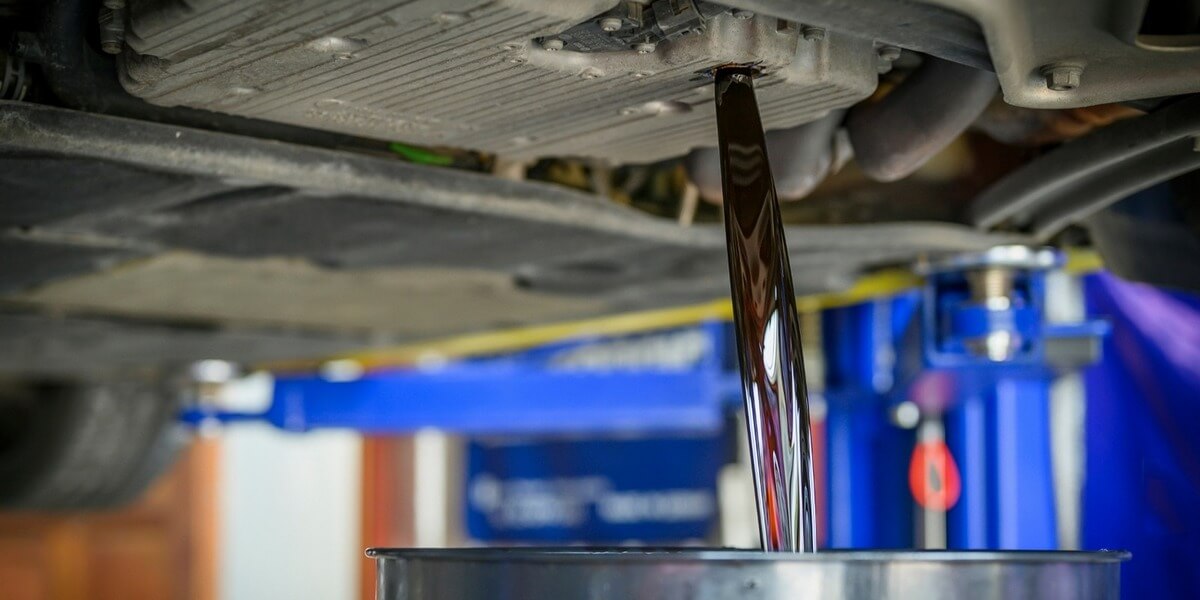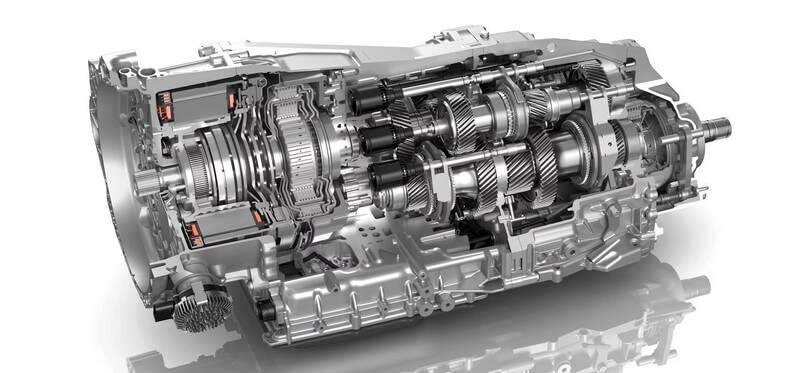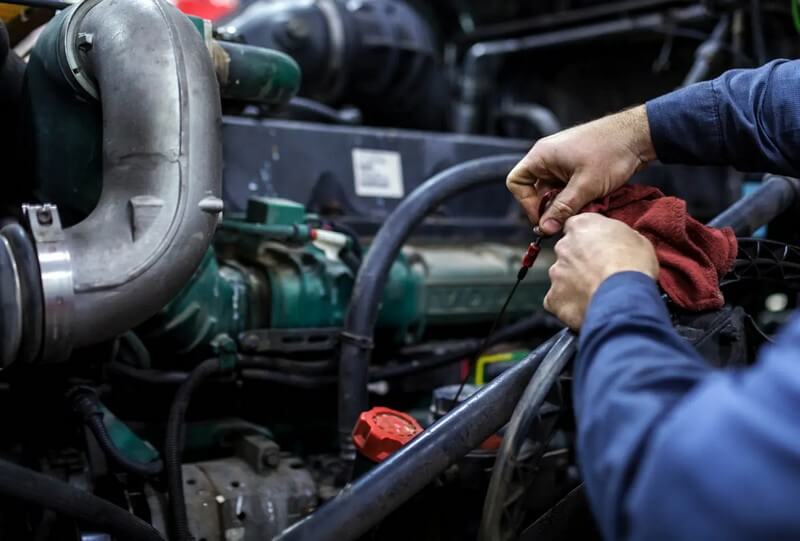
When was the last time you thought about your transmission fluid? Probably not recently, right? But here’s the thing: keeping that fluid fresh is one of the easiest ways to keep your car running smoothly and avoid some pretty expensive repairs down the road.
A transmission flush is often overlooked in routine maintenance, but it can make a huge difference in how your car shifts, drives, and performs overall. And the best part? You don’t need to be a mechanic to take care of it. With a bit of know-how and the right steps, it’s a job you can handle at home.
In this guide, we’ll break down why flushing your transmission fluid is important, how often you should do it, and the different methods for getting it done. By the end, you’ll have a clear understanding of how to keep your transmission in top shape, saving you both time and money in the long run.
Without further ado, let’s jump in!
Why You Should Flush Your Automatic Transmission Fluid
The transmission fluid’s job is to keep your car’s transmission cool, lubricated, and shifting smoothly. Over time, the fluid breaks down and becomes contaminated with dirt and debris, losing its effectiveness. Flushing the fluid replaces the old with fresh, ensuring your transmission performs at its best. Here’s why it matters:
- Prevents Overheating: Fresh fluid helps cool the transmission and prevents overheating, which can cause serious damage.
- Improves Shifting: Worn-out fluid leads to rough or delayed gear changes, while fresh fluid restores smooth shifting.
- Reduces Wear and Tear: Clean fluid lubricates internal parts, minimizing friction and extending the life of your transmission.
- Boosts Efficiency: A well-maintained transmission runs more efficiently, improving overall performance and fuel economy.
- Saves Money: Regular flushes help avoid costly transmission repairs by preventing severe damage.
In short, flushing your transmission fluid is essential to keep your vehicle running smoothly, prevent breakdowns, and save money in the long run.
When Should You Flush Your Automatic Transmission Fluid?
Knowing when to flush your transmission fluid is one of the major ways to keep your car in good shape. That said, the right time to flush it depends on several factors. Here’s a breakdown of what to consider:
Mileage-Based Recommendations
Most manufacturers recommend flushing the transmission fluid every 30,000 to 60,000 miles, though this varies by make and model. Check your vehicle’s owner's manual for specific guidance. Some cars are fine with regular drain-and-fill procedures, while others benefit from a full flush as they approach the higher end of the mileage range.
Driving Conditions Matter
How and where you drive plays a big role in how often your transmission fluid needs flushing. If you drive in stop-and-go traffic, tow heavy loads, or live in a hot climate, the fluid will break down faster. In those cases, you might need to flush it more frequently—every 20,000 to 30,000 miles. For highway driving and lighter loads, you can likely stretch it closer to the 60,000-mile mark.
Warning Signs to Watch For
Beyond mileage, your car will often give you signs that it’s time for a flush. Pay attention to these:
- Rough or delayed shifting: Hesitation or harsh shifts could mean your fluid is contaminated.
- Dark, dirty fluid: Transmission fluid should be clear and reddish. If it’s dark or smells burnt, it’s time for a flush.
- Unusual noises: Whining, grinding, or any strange sounds from the transmission shouldn’t be ignored.
Manufacturer Recommendations Are Key
Always follow the guidance in your repair manual. Transmission systems are designed to specific standards, and your manual will tell you whether a full flush or a drain-and-fill is appropriate. Ignoring these instructions can lead to damage, so stick with what the manufacturer recommends.
Understanding Different Types of Automatic Transmissions
Not all automatic transmissions are the same, and knowing the differences helps you maintain them properly. Each type has its own design and fluid needs, so understanding which one you have will guide your approach to fluid maintenance and flushing.
Torque Converter Automatics
This is the most common type, often referred to as a "traditional" automatic. It uses a torque converter, which acts as a fluid coupling to replace the manual clutch, letting the engine spin independently from the transmission. It also multiplies torque when accelerating from a stop. These transmissions rely heavily on fluid for lubrication, cooling, and operating the torque converter, so regular flushes are key to keeping them running smoothly.
Automated Manual Transmissions (AMT)
An AMT uses a regular manual transmission but with electronically controlled clutches and shifts. The computer decides when to change gears, but internally, it’s similar to a manual. These transmissions need regular fluid flushes to keep the hydraulics that control the clutches and shifters clean and well-lubricated, preventing wear on these components.


Dual-Clutch Transmissions (DCT)
DCTs use two clutches—one for odd gears and one for even gears—which allows for faster, smoother shifts. These transmissions are popular in high-performance vehicles due to their quick gear changes. DCTs are more sensitive to fluid condition because of their precision, so regular flushes are essential to maintain smooth shifts and prevent overheating. Make sure to use the correct fluid, as some DCTs require specific formulations different from traditional automatics.
Continuously Variable Transmissions (CVT)
CVTs don’t have fixed gears. Instead, they use a system of pulleys and belts to provide seamless acceleration. This design improves fuel efficiency but puts constant pressure on the fluid, which must handle lubrication and friction management. CVTs are particularly sensitive to fluid condition, so regular flushes are necessary to prevent slippage and wear on the belt system.
Indeed, each transmission type has its own fluid requirements and maintenance procedures. Knowing which one your vehicle has will help you choose the right fluid, determine how often to flush it, and follow the correct steps to keep it in top condition.
Step-by-Step Procedure for Flushing Automatic Transmission Fluid
Flushing your automatic transmission fluid might sound complicated, but with the right steps, it’s a task you can handle. Depending on your vehicle’s design and the tools you have, there are a few methods to choose from. Here’s a breakdown of the most common ones:
Method #1: Drain and Refill (With Dipstick)
This is the simplest method, suited for vehicles with a transmission dipstick.
What You’ll Need:
- Correct transmission fluid for your vehicle
- Drain pan
- Funnel
- Socket wrench set
- Rags and gloves
Step-by-Step:
- Warm Up the Engine: Let your car idle for 5-10 minutes. This helps the old fluid drain more easily and ensures it carries more debris out of the pan.
- Locate the Transmission Pan: Check your repair manual to find the pan and drain plug location—usually underneath the vehicle.
- Drain the Fluid: Place the drain pan underneath, loosen the drain plug with a socket wrench, and let the fluid drain completely. Once done, replace the plug.
- Refill the Transmission Fluid: Insert the funnel into the dipstick tube and slowly add the new fluid. Depending on your vehicle, you may need to do this with the engine running, in Park or Neutral, or even at a specific RPM. Always consult your repair manual for the correct procedure. Be careful not to overfill—add a little less than what you drained, then check the dipstick to top off as needed.
- Check the Fluid Level: After refilling, start the car and let it idle in “Park” (or follow your vehicle’s specific instructions). Shift through all the gears with your foot on the brake to circulate the fluid. Recheck the dipstick and add more fluid if necessary.


Method #2: Drain and Refill (Without Dipstick)
For newer vehicles without a dipstick, the process is a bit different but still manageable.
What You’ll Need:
- Transmission fluid
- Drain pan
- Funnel or hand pump
- Socket wrench set
- Rags and gloves
- Repair manual for correct refill procedure
Step-by-Step:
- Warm Up the Engine: Let the car idle for a few minutes to warm the fluid.
- Locate the Transmission Pan and Fill Plug: Check your manual to find the fill and drain plugs on the transmission case.
- Drain the Fluid: Loosen the drain plug with a socket wrench and let the fluid drain into the pan. Once drained, replace the plug.
- Refill the Fluid: Depending on the vehicle, you might need to use a hand pump or funnel with an extension to refill the transmission through the fill plug (people sometimes get quite creative when looking for a solution to refill a transmission that doesn’t have a dipstick — don’t hesitate to try out a few different ways and see what works for you!). Some vehicles also require monitoring the transmission fluid temperature during the refill, as the level can change depending on the temperature (e.g., between 115°F to 130°F). Certain models may also utilize a check plug method, where you remove the plug while the engine idles—fluid dripping out means the level is correct.
- Check the Fluid Level: Some vehicles have a check plug instead of a dipstick. With the car running and warm, remove the check plug to see if any fluid seeps out. If not, add more fluid until it does.
Method #3: Machine Flush
A machine flush is more thorough because it replaces all the old fluid in one go. This is often done in shops but can be handled at home with the right equipment.
What You’ll Need:
- Transmission flush machine (available for rent or purchase)
- Correct transmission fluid for your vehicle
- Repair manual for machine connections and procedures
Step-by-Step:
- Connect the Flush Machine: Follow your repair manual and the machine’s instructions to connect it to the transmission cooler lines. These lines are typically found near the radiator. Be sure the connections are secure to prevent any damage.
- Flush the System: Turn on the machine. It will push out the old fluid while pumping in new fluid. The process usually takes 15 to 30 minutes, depending on your vehicle. If you’re working on an older transmission or one with high mileage, avoid using high pressure, as it can dislodge sludge and cause internal blockages.
- Monitor the Process: Keep an eye on the machine’s gauges to ensure everything is running smoothly. The machine should stop automatically when the flush is complete.
- Check the Fluid Level: After the flush, check the fluid level using the dipstick or fill/check plug, and add more fluid if needed.
Regardless of the method you choose, it’s crucial to use the right type and amount of fluid for your vehicle. Always consult your manual for specific instructions. If you’re unsure about the process, consider getting professional help—transmission repairs are expensive, and it’s better to be safe than sorry.
If you’re someone who works on a range of vehicles—from your everyday car to an ATV or semi-truck—the principles are similar, but each vehicle type has unique needs. Let’s take a look at how this process changes across vehicle types.
Special Considerations for Other Types of Vehicles
While the basic principles of transmission fluid flushing are similar across different vehicles, certain types—like semi-trucks, ATVs, UTVs, scooters, and hybrid vehicles—have unique designs and operating environments that demand specialized approaches. Here's what you need to know for each:
Hybrid and Plug-In Hybrid Vehicles
Hybrid vehicles combine electric motors with traditional gasoline engines, resulting in a complex powertrain. These transmissions often feature electric motors, planetary gear systems, or electric CVTs (Continuously Variable Transmissions). Proper fluid maintenance is crucial for both mechanical and electrical components in these systems. Hybrid-specific transmission fluids are formulated not only for lubrication but also to protect the electric motors and manage heat efficiently. Always consult the manufacturer’s guidelines, as using the wrong fluid or procedure could damage sensitive hybrid components during a flush. Hybrids may not require fluid changes as frequently as traditional vehicles, but regular checks are still essential to avoid costly repairs.


Semi-Trucks
Semi-trucks are built for long hauls, heavy loads, and tough terrains, which means their transmissions are significantly larger and more complex than those in passenger vehicles. Semi-trucks typically hold several gallons of transmission fluid designed to withstand high temperatures and extreme pressures. Flushing these transmissions requires specialized equipment, often involving a machine flush to ensure a thorough clean. Given the strain these trucks experience, fluid changes are typically recommended every 100,000 miles or less, especially under tough driving conditions like heavy towing or steep inclines. As with any heavy-duty vehicle, following the manufacturer’s guidelines for fluid type and maintenance intervals is critical for safety and performance.
ATVs and UTVs
All-terrain vehicles (ATVs) and utility terrain vehicles (UTVs) are subjected to harsher conditions than typical road vehicles, often encountering mud, water, and rugged landscapes. Because of this, their transmission fluid can become contaminated more quickly. In wet or muddy conditions, it's essential to flush the fluid sooner than the standard interval to avoid performance issues and premature wear. Debris, water, and dirt can enter the transmission, leading to significant damage if not addressed. Despite their small size, these vehicles require the same careful attention during a flush to ensure that no contaminants are left in the system.
Scooters
Scooters may be compact, but their transmissions—often CVT (Continuously Variable Transmission) systems—still require regular maintenance. Scooters face frequent stop-and-go traffic, which puts stress on the transmission’s belts and pulleys. Even though a drain-and-fill process for scooters is usually straightforward, precision is key when refilling the fluid. Using the correct type and quantity of transmission fluid is crucial, as scooters are particularly sensitive to mismatched fluids. Neglecting this maintenance can result in a sluggish ride or, in worse cases, mechanical failure. Always follow the manufacturer’s guidelines to ensure proper care.
Frequently Asked Questions (FAQ)
How often should I flush my transmission fluid?
The frequency of transmission fluid flushes depends on your vehicle’s make, model, and how you drive. Typically, most vehicles benefit from a flush every 30,000 to 60,000 miles. However, if you frequently tow heavy loads, drive in stop-and-go traffic, or live in hot climates, you may need to flush the fluid more often. Always consult your repair manual for the manufacturer’s specific recommendations. Flushing too frequently isn't necessary, but waiting too long can lead to avoidable wear and tear.
Can a transmission flush fix shifting problems?
A transmission flush can help with issues like rough or delayed shifting if they’re caused by dirty or degraded fluid. Contaminants like debris or metal particles can interfere with the transmission’s performance. Flushing the fluid removes these contaminants and restores proper lubrication. However, if the issue is due to worn-out components, a flush won’t fix the problem. Further inspection and possible repairs may be necessary.
What’s the difference between a transmission flush and a transmission fluid change?
A transmission fluid change typically removes only part of the old fluid—usually when replacing a filter or servicing the transmission pan. This leaves old fluid in areas like the torque converter and lines. A transmission flush, on the other hand, removes all the fluid and replaces it with fresh fluid. When your fluid is degraded and needs replacement, you’ll typically need to perform a full flush to ensure the entire system is cleaned and refilled.
Can flushing my transmission cause damage?
When done correctly, a transmission flush is generally safe and beneficial for most vehicles. However, with older cars—especially those that haven’t had a flush in years—there’s a bit of a catch. If your vehicle has high mileage and the fluid has never been replaced, a flush could potentially dislodge built-up grime and debris that has been holding things together. This could lead to blockages or even cause the transmission to malfunction.
In these cases, the rule of thumb is: if it ain't broke, don’t fix it. If your transmission is shifting smoothly and you haven’t had any issues, sometimes it’s better to leave it as is, especially if the car has run on the same fluid for years without trouble. Flushing out very old fluid could stir up sediment and cause more harm than good.
On the other hand, if you’ve been regularly changing the fluid or flushing it at the recommended intervals, a flush won’t hurt and can actually prevent future problems. It’s all about knowing your car’s history—if it’s been well-maintained, a flush is a great way to keep it in top shape. But if the transmission has been neglected for decades, proceed with caution. In these cases, it’s often safer to do a partial fluid change instead of a full flush, just to be on the safe side.
Do I need special tools to flush my transmission fluid?
The tools required depend on the method. For a basic drain-and-refill, you typically only need standard tools like a socket wrench, drain pan, and funnel. For vehicles without a dipstick or when performing a full machine flush, you’ll need specialized tools like a hand pump or a transmission flush machine. These machines can often be rented from auto parts stores. Always check your manual to ensure you have the correct tools and follow the detailed instructions for your vehicle.
Flushes Keep Your Automatic Transmission Running Strong
Taking care of your transmission is an investment in your vehicle’s long-term performance. Whether you’re driving a daily commuter or a high-performance machine, regular transmission fluid flushes help prevent costly repairs, improve efficiency, and extend the life of one of your car’s most critical components.
Don’t wait for a problem to arise—proactive care is the key to avoiding major transmission issues. So the next time you’re thinking about vehicle maintenance, remember that a little time spent now can save you a lot of hassle (and money) later on. Your car (and your wallet) will thank you.
